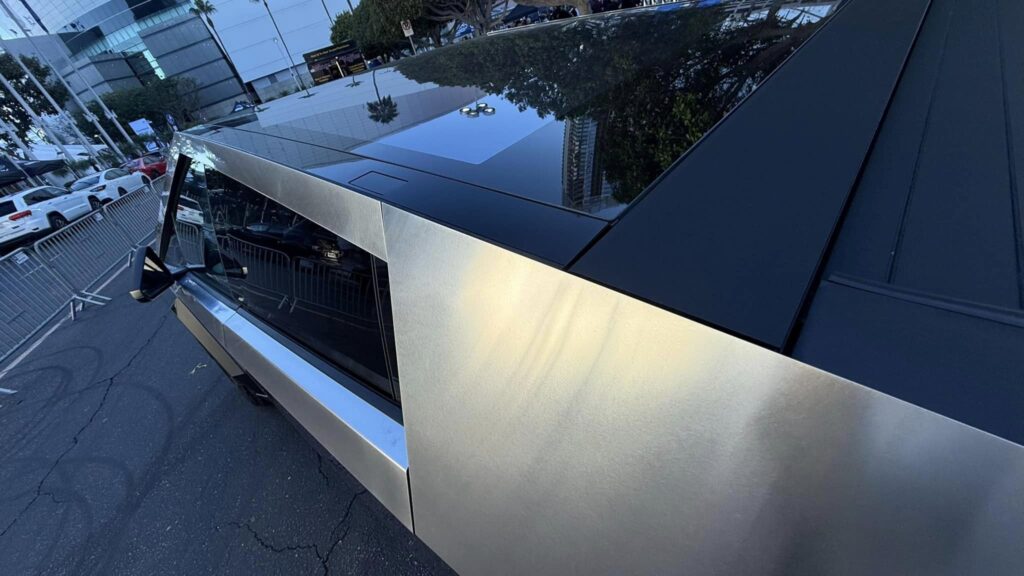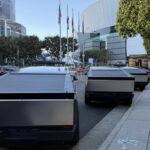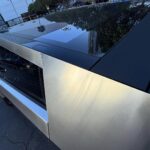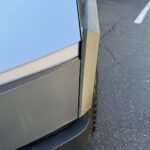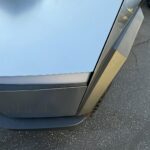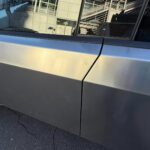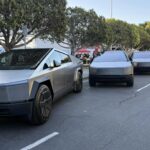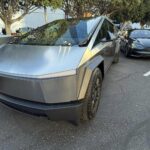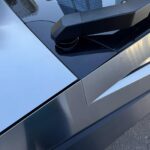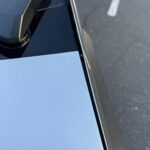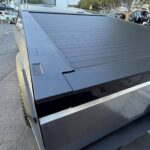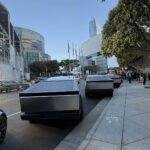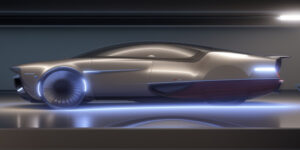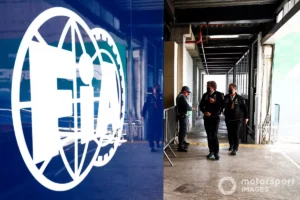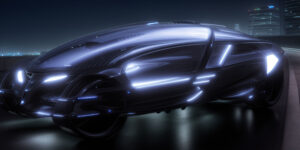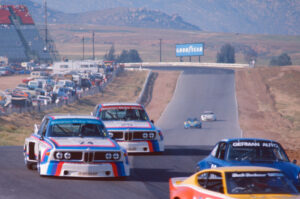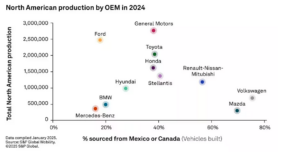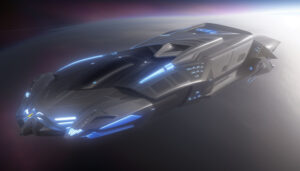Should The TESLA CYBERTRUCK Be Allowed On The Road?
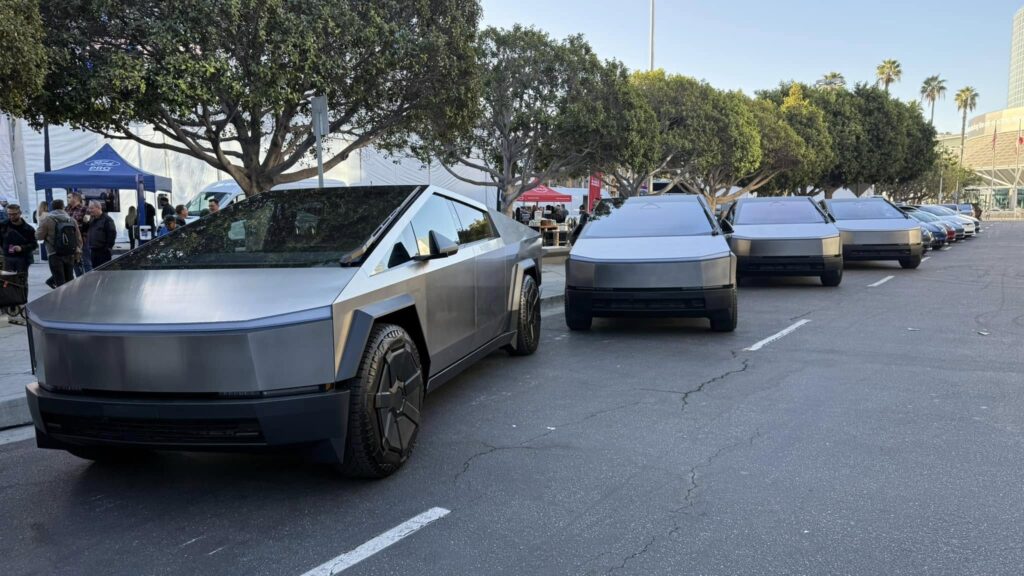
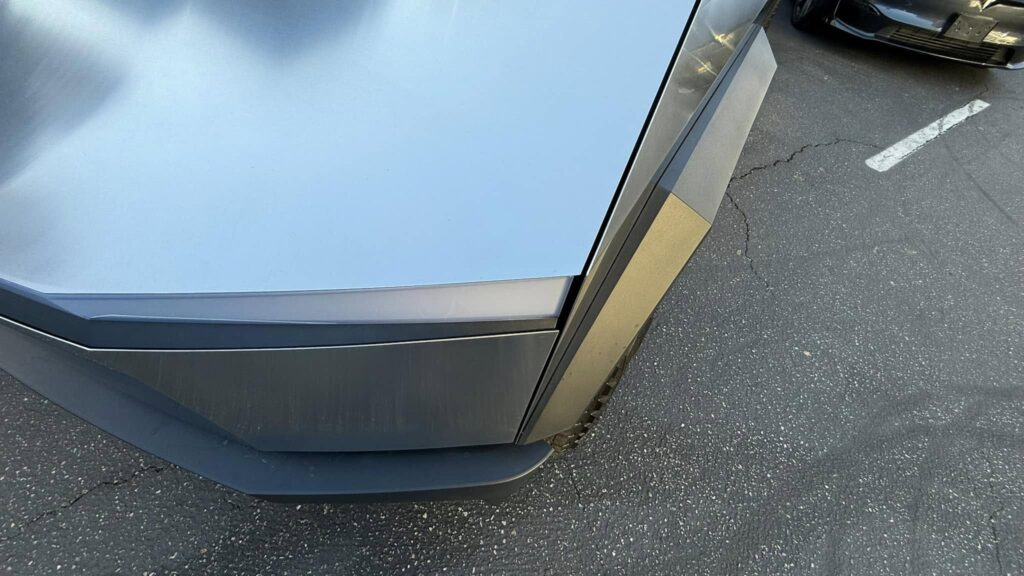
The Tesla Cybertruck is on the road in California, but should it be. You cannot ban a vehicle from the road because its extremely ugly, and beside, some people like it. No, Automotive DESIGN encapsulates everything about the vehicle, not just the visual looks of the exterior and interior. Having seen an increasing amount of Cybertrucks on the roads locally, I finally took a closer look at 5 of them while I was at the LA Auto Show. What I noticed, and I was not alone in immediately expressing my concern, was the many sharp edges of the front and rear panels of the exterior.
Sparked by recent images of 2 Cybertrucks in a rear-end collision, it was clear that the front glass of the rear one had broken and some plastic panels on both were damaged, but from what I could see NONE of the metal panels on either vehicle were bent, dented nor deformed at all. In it self this makes sense since the logic of why they look the way they do is that the ultra-hard 30X cold-rolled stainless steel has very limited “give” in being “formed”. Unlike conventional metals used you cannot stamp these in complex or even less complex 3D shapes. This means that there can be 1 “fold” of a specific angle and that is it. They cannot have rain gutters molded into the metal, no flanges, nothing. Just 1 fold and then cut.
That ‘cut” is clearly visible everywhere and it is not being hidden by anything. There are no plastic or rubber covers placed of the sharp edges to cover the sharp edges anywhere. Given the fact that this metal is so unforgiving and cannot be deformed, my concern is how it will perform in crashes. From a common sense perspective these panels will certainly slice through other metal and plastic parts of vehicles not made with this same metal. Much more concerning to me though is that any human and any animal will be sliced through, flesh and bone, directly on impact, The chance of survival will be minimal, and if at all, then some major surgeries will be necessary to patch up all the sliced off parts, external, internal and even bones.

Has the Cybertruck passed crash tests?
Yes, there have been some crash tests conducted on the Tesla Cybertruck, but the results are still somewhat limited and not officially rated by major safety organizations like the National Highway Traffic Safety Administration (NHTSA) or the Insurance Institute for Highway Safety (IIHS).
Tesla has performed its own crash tests and shared some footage during the delivery event in November 2023. The tests included a full-frontal impact at 35 mph, a side impact at 38 mph, and a rollover test at 16 mph. The Cybertruck’s unique design, featuring ultra-hard 30X cold-rolled stainless steel, was shown to withstand these impacts. However, the footage and images released are not comprehensive, and detailed data on the crash performance is still lacking.
It’s worth noting that while Tesla is confident in the Cybertruck’s safety, the vehicle has not yet received official crash test ratings from NHTSA or IIHS. The NHTSA has added preliminary safety ratings for the Cybertruck, but these do not include specific crash ratings.
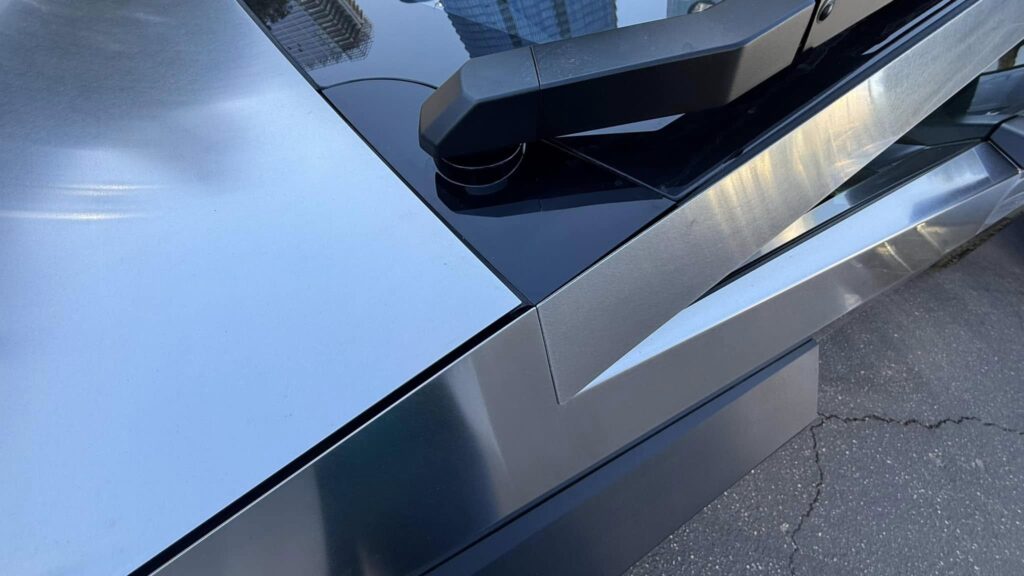
Have the sharp edges of the hard metal panels been tested and approved?
This is a very important point about vehicle safety regulations and the design of the Tesla Cybertruck. The Cybertruck’s unique design, with its sharp edges and ultra-hard stainless-steel exterior, has indeed sparked concerns among safety advocates and experts.
The National Highway Traffic Safety Administration (NHTSA) and the Insurance Institute for Highway Safety (IIHS) have not yet conducted official crash tests on the Cybertruck. Tesla has performed its own internal crash tests and claims the vehicle complies with Federal Motor Vehicle Safety Standards (FMVSS). However, there are no specific crash ratings available from these independent organizations yet.
Some experts have expressed concerns about the Cybertruck’s design, particularly the sharp edges that could potentially cause more harm in a collision with pedestrians or other vehicles. The lack of crumple zones, which are designed to absorb impact energy, is also a point of contention.
It’s definitely a topic that will require more scrutiny as the Cybertruck becomes more widely used. Do you think Tesla should redesign the Cybertruck to address these safety concerns?
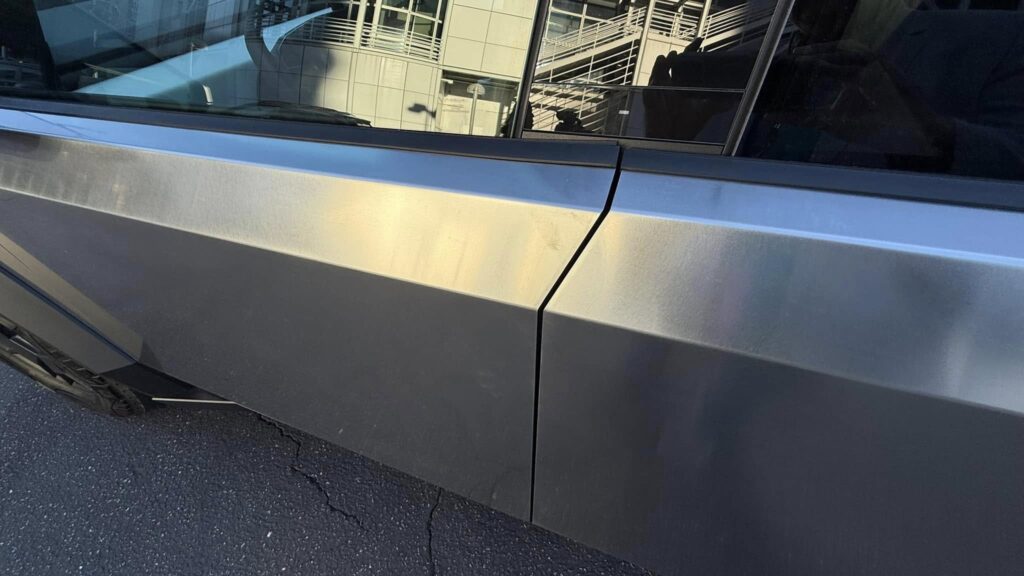
Should the Cybertruck be allowed to drive on the US roads
The question of whether the Cybertruck should be allowed to drive on U.S. roads if safety concerns are not fully addressed is indeed a serious one.
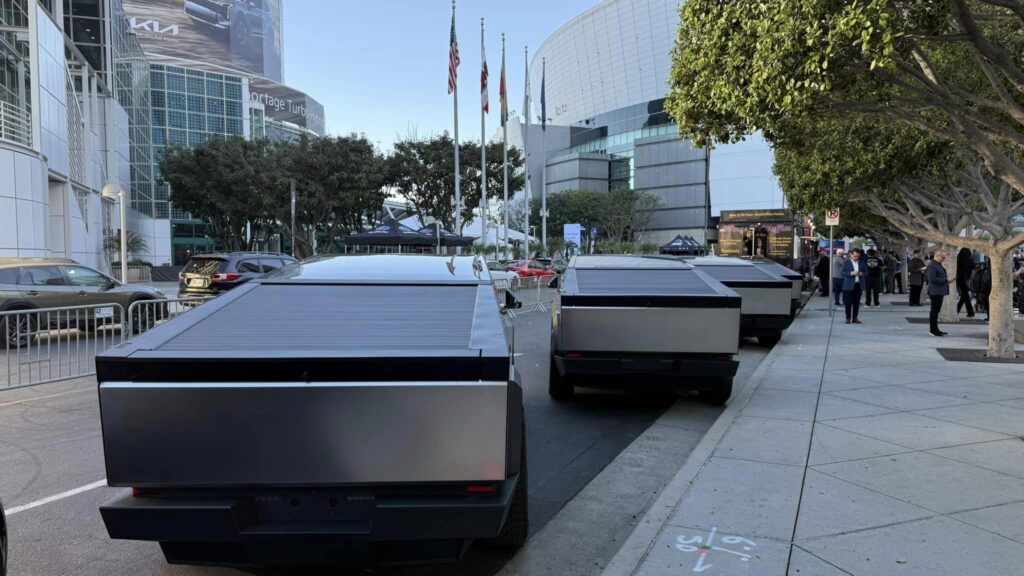
Regulatory Standards and Safety Concerns
1. Regulatory Compliance: To be legally driven on U.S. roads, vehicles must comply with the Federal Motor Vehicle Safety Standards (FMVSS) set by the National Highway Traffic Safety Administration (NHTSA). These standards cover a wide range of safety aspects, including crashworthiness, crash avoidance, and post-crash survivability.
2. Design Considerations: The Cybertruck’s unique design, with its sharp edges and hard exterior, raises concerns about pedestrian safety and crash impact on other vehicles. Typically, vehicles are designed with crumple zones and deformable structures to absorb impact energy, reducing injury risks in a collision. If the Cybertruck’s design compromises these aspects, it could indeed pose a greater risk to both pedestrians and occupants of other vehicles.
3. Crash Testing and Validation: Before allowing widespread use, it’s essential that independent crash tests by organizations like NHTSA and the Insurance Institute for Highway Safety (IIHS) are conducted. These tests would provide an objective assessment of the vehicle’s safety performance.
4. Public Safety: Ensuring public safety is paramount. If there are unresolved safety issues, regulatory authorities might require Tesla to make design adjustments or add safety features before granting approval for road use. This could involve adding crumple zones, refining the exterior design, or incorporating advanced pedestrian safety systems.
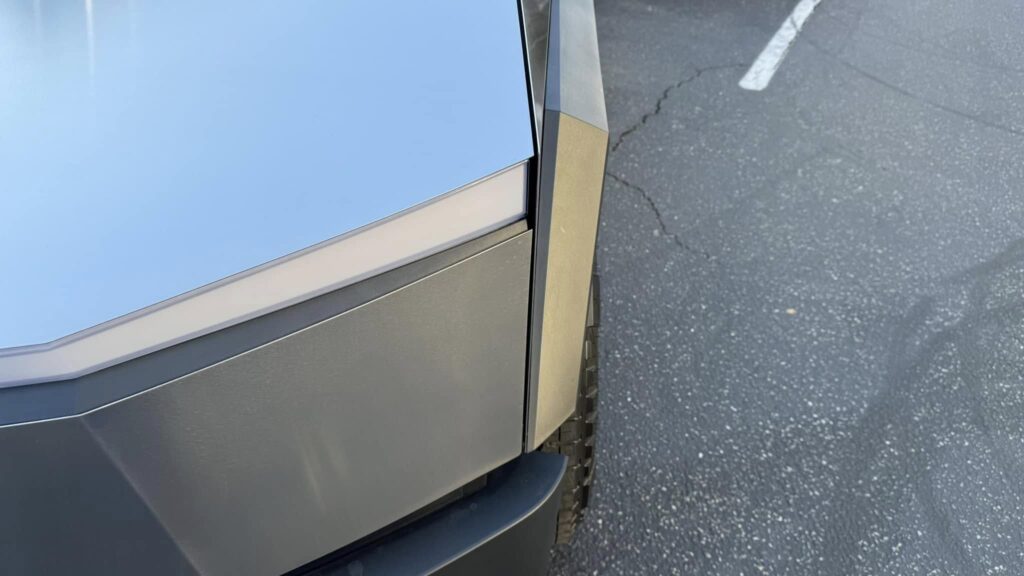
Ethical Considerations
1. Manufacturer Responsibility: Tesla has a responsibility to ensure that their vehicles do not pose undue risks to users or the public. This includes thoroughly testing and validating their designs against safety standards and making necessary modifications to address any identified risks.
2. Public Trust: Allowing vehicles with potential safety concerns on the road without thorough testing and validation could undermine public trust in both the manufacturer and the regulatory bodies tasked with ensuring vehicle safety.
Conclusion
Given these points, it would be prudent for the Cybertruck to undergo comprehensive safety testing and for any concerns to be addressed before it is allowed widespread road use. This approach ensures that the vehicle meets all safety standards and protects both drivers and pedestrians.
This might be a mute discussion though, since Tesla’s Elon Musk will be appointed to be part of the next administration in the US Government and thereby can prevent any and all investigations into the Cybertruck’s safety, but in doing so it would set a very bad precedent for the automotive industry.
